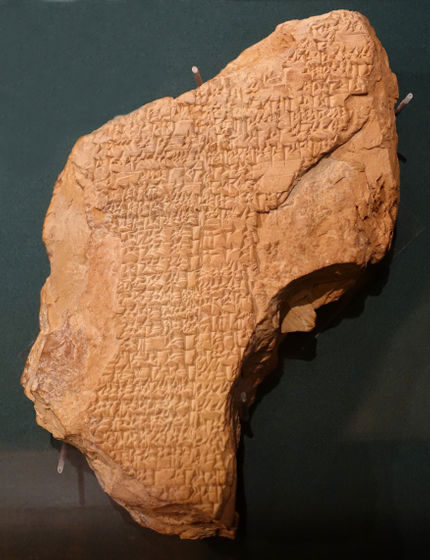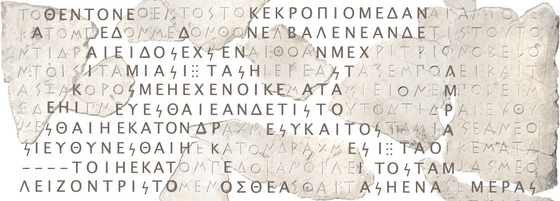Succeeded in restoring inscriptions lost in DeepMind's inscription decoding AI 'Ithaca' with 72% accuracy

A paper was published that the inscription decoding AI developed by DeepMind, an AI company under the umbrella of Google's parent company Alphabet, was able to restore fragmented and very unreadable ancient Greek inscriptions with an accuracy of up to 72%. It is expected that the understanding of ancient civilization will be promoted by AI that can infer not only the content of the inscription but also the age and region where it was written with high accuracy.
Restoring and attributing ancient texts using deep neural networks | Nature
DeepMind's new AI model helps decipher, date, and locate ancient inscriptions --The Verge
https://www.theverge.com/2022/3/9/22968773/ai-machine-learning-ancient-inscriptions-texts-deepmind-ithaca-model
The inscriptions left by the ancients are of great archaeological importance, but many of them are unreadable because they have shattered into pieces and weathered over the years. Inorganic substances such as stone monuments and clay tablets cannot be analyzed by radiocarbon dating , so it is difficult to guess when they were created.

To decipher fragmented inscriptions, archaeologists infer the flow of letters and sentences compared to similar inscriptions, but it is difficult for humans to understand all the vast amount of archaeological data and find patterns from it. It will be the work of.
Therefore, a research team of DeepMind AI researcher Yannis Assael and others trained AI with a data set consisting of 78,608 ancient Greek inscriptions, and the text, age, and origin of the inscriptions left by the ancient Greeks. I made it possible to guess.
This AI, named 'Ithaca', succeeded in restoring a damaged inscription with 62% accuracy by itself. Archaeologists used Ithaca to decode and improve the accuracy to 72%. Also, when I showed an inscription whose origin is known to be Ithaca, I was able to estimate the date when the inscription was written with an error of 30 years on average, and there is a 71% probability of where it was written. It was possible to identify it.

Thea Sommerschield of the University of Venice, co-author of the paper, said, 'Ithaca supports not only Latin-based materials such as ancient Greek, which we tried to decipher this time, but also all ancient characters such as Maya, wedge-shaped characters, and papyrus. It is designed to be able to do it, 'he said, emphasizing that the true value of Ithaca lies not only in accuracy but also in flexibility.
Related Posts:







